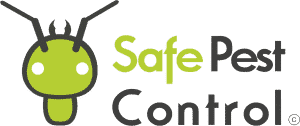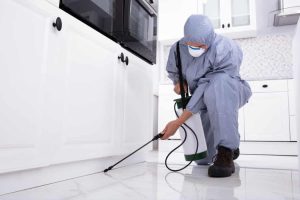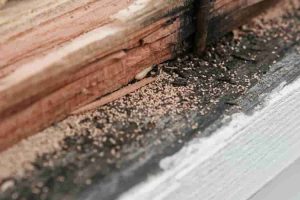Maintaining a spotless kitchen is essential for both food safety and pest prevention. Thorough cleaning and sanitizing of kitchen equipment can greatly reduce the risk of pest harborage. By paying close attention to areas where food particles and grease can accumulate, we can create a more hygienic environment.
One key aspect of keeping our kitchens clean is positioning kitchen equipment properly. Ensuring that equipment is raised off the floor makes it easier to clean underneath and prevent the buildup of grime. This helps to prevent pests from finding easy shelter in hidden areas.
We must also focus on regular maintenance and repair of our kitchen equipment. Broken or improperly sealed equipment can provide pests with food and shelter, complicating our pest control efforts. By following best practices for maintenance, we can maintain a cleaner and safer kitchen environment.
Establishing Effective Cleaning Protocols
To maintain food safety and prevent pests, it is essential to establish thorough cleaning protocols. We need clear schedules, correct cleaning agents, and proper staff training.
Developing a Cleaning Schedule
Creating a consistent cleaning schedule is crucial for ensuring hygiene in the kitchen. Tasks should be divided into daily, weekly, and monthly procedures. For example:
- Daily: Cleaning and sanitizing all cooking surfaces, utensils, and equipment after use.
- Weekly: Deep cleaning of less frequently used equipment and thorough cleaning behind and under appliances.
- Monthly: Inspecting and servicing kitchen vent hoods and checking pest control measures.
We can use a detailed checklist to ensure all tasks are completed on time. This method not only keeps the kitchen spotless but helps prevent pest harborage by addressing all areas regularly.
Selection and Proper Use of Cleaning Agents
Selecting the right cleaning agents, such as detergents and disinfectants, is vital for maintaining hygiene. We must choose products that are effective against a range of contaminants and safe for food contact surfaces. For example:
- Detergents break down grease and remove food particles.
- Disinfectants eliminate bacteria and viruses.
It’s important to follow the manufacturer’s guidelines for dilution and contact time to maximize effectiveness. Using the wrong amount or mixing chemicals can reduce effectiveness and be dangerous. Regularly updating our inventory and ensuring all products are properly labeled will also help maintain consistent cleanliness.
Implementing Training and Education Programs
Training and education programs are key to ensuring staff understand and adhere to cleaning protocols. We should provide:
- Regular training sessions to keep staff updated on procedures, regulations, and best practices for food safety.
- Hands-on demonstrations to show correct techniques for using cleaning agents and equipment.
- Certifications to validate that staff have completed necessary training, enhancing their knowledge and commitment.
Educating our team about the importance of sanitation and food safety not only complies with guidelines but also fosters a culture of responsibility and diligence in preventing pest harborage and ensuring a safe kitchen environment.
Equipment-Specific Cleaning Techniques
Proper cleaning and sanitizing of kitchen equipment are essential to prevent contamination and ensure food safety. Specific techniques for different types of equipment help eliminate bacteria and maintain sanitation standards.
Deep Cleaning Kitchen Appliances
When it comes to deep cleaning kitchen appliances like ovens, stoves, and refrigerators, it’s vital to disassemble removable parts. For ovens and stoves, remove racks and burners, then scrub them using dedicated cleaning tools like brushes.
For refrigerators, clear out all shelves and drawers. Clean these components with warm soapy water and rinse thoroughly. Pay special attention to the edges and seals where bacteria often harbor. Don’t forget to clean behind and underneath appliances to avoid pest harborage.
Sanitizing Surface Areas
Sanitizing surface areas such as counters, tables, and food contact surfaces is crucial. It’s important to use sanitizing sprays approved for kitchen use. First, remove any dirt or food particles.
Use a clean cloth or disposable wipes to apply the sanitizer evenly. Make sure the surface remains wet for the recommended contact time to effectively kill bacteria. Regularly clean and sanitize chopping boards and cutting boards to prevent cross-contamination. Separate boards for raw meat and vegetables are advised to avoid cross-contamination.
Maintaining Utensils and Accessories
Maintaining utensils and accessories like knives, dishes, and other tools is essential for kitchen hygiene. Always wash utensils immediately after use with hot, soapy water. For items like knives and chopping boards, consider using a dishwasher if they are dishwasher-safe.
Deep clean utensils with brushes to ensure all food residues are removed, especially in hard-to-reach areas. For accessories like deep fryers, it’s important to properly drain and clean the oil compartment and filters regularly to prevent buildup.
Keeping our kitchen tools and surfaces clean requires attention to detail and a consistent cleaning routine. Proper techniques ensure we minimize the risk of contamination and maintain a sanitary cooking environment.
Preventing Cross-Contamination and Pest Harborage
In our discussion, we’ll examine the crucial steps needed to keep kitchen equipment clean and sanitized to prevent cross-contamination and pest harborage. This includes handling food safely, proper waste disposal, and effective pest management.
Handling Food and Preventing Contamination
First, we must be diligent when handling food to prevent cross-contamination. Raw meats, vegetables, and fruits must be separated at all times. Using separate cutting boards and utensils for raw and cooked foods helps reduce the risk of foodborne illnesses.
We should always clean and wipe surfaces with sanitized cloths after handling raw foods. Scrubbing all equipment with hot, soapy water and rinsing thoroughly is essential. Afterward, air dry or use clean towels. Regularly disinfect high-touch areas like countertops, handles, and sinks.
Best Practices for Waste Disposal and Spills
Effective waste control is vital to maintain a pest-free environment. We should promptly clean up any spills and dispose of food waste correctly. All trash bins should have tight-fitting lids and be emptied frequently to avoid attracting pests.
Cleaning debris and spills right away is necessary. Using designated bins for different types of waste can also help. For example, separating organic waste from recyclables can enhance cleanliness standards in our work area.
Pest Management Strategies
Implementing an effective pest management system is essential in food service areas. Regular inspections and maintaining a cleaning schedule can help. Keeping the kitchen free of standing water and crumbs will reduce pest harborage.
We should seal entry points to prevent rodents and insects from getting in. Visual inspections should be conducted to locate and address any signs of pests immediately. Maintaining a clean environment by frequent sanitizing and disinfecting helps ensure pest harborage does not become an issue.
By following these strategies, we can effectively prevent cross-contamination and pest harborage in our kitchen.
On-Time Service

5 STAR SERVICE BASED ON 100+ GOOGLE REVIEWS
PET & FAMILY FRIENDLY TREATMENT

ALL YEAR-ROUND PROTECTION
Take Back Control Now
8
REASON TO CHOOSE SAFE PEST CONTROL
- Guarantee protection all year-round
- 30 Years Collective Experience
- An impeccable reputation across Sydney's Suburbs
- Certified treatments & written Warranty On all work carried out
- Family Owned & Operated
- Rated #1 Pest Control In Sydney NSW
- No Mess, No Smell
- Family & Pet Friendly Treatments
REQUEST A QUOTE








